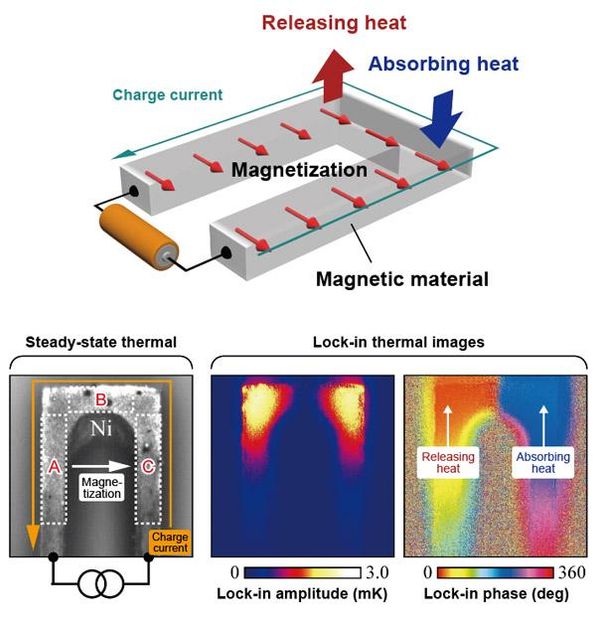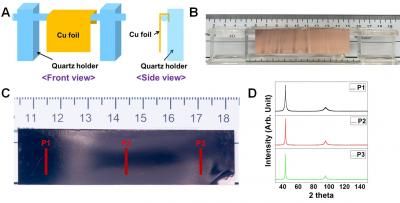Observation of anisotropic magneto-Peltier effect
Advertisement
For the first time in the world, NIMS and Tohoku University jointly observed an anisotropic magneto-Peltier effect--a thermoelectric conversion phenomenon in which simple redirection of a charge current in a magnetic material induces heating and cooling. Thermoelectric heating and cooling are conventionally achieved by applying a charge current to a junction between two different electrical conductors. In this research, we demonstrated a novel thermal control function using a single magnetic material without relying on a junction structure. Although the anisotropic magneto-Peltier effect is one of the fundamental thermoelectric conversion phenomena, it remained to be observed. We hope that this report will stimulate further advances in basic and applied research on thermoelectric conversion.

Experimental configuration for measuring the anisotropic magneto-Peltier effect and lock-in thermal images of a U-shaped ferromagnet.
NIMS
Conversion between charge and heat currents can be achieved in metals and semiconductors by means of the thermoelectric effect. A well-known example of the conversion is the Peltier effect, whereby a conductor can be heated or cooled by applying a charge current. Although the Peltier effect was discovered almost 200 years ago, global research activities on this subject remain active today in an effort to increase the thermoelectric conversion efficiency in electronic devices and apply this phenomenon to a wider range of technologies (e.g., development of more energy-efficient computers).
The NIMS-led research team used a thermal measurement technique called lock-in thermography to make systematic measurements of temperature changes in a magnetic material while a charge current was applied. As a result, we observed changes in the Peltier coefficient in relation to the angle between the direction of the charge current and the direction of the magnetization in the magnetic material. It has been previously observed that the Seebeck effect--a phenomenon in which a temperature difference between a conductor produces a charge current--changes in relation to the direction of magnetization; this is called the anisotropic magneto-Seebeck effect. However, the anisotropic magneto-Peltier effect, which is the reciprocal of the anisotropic magneto Seebeck effect, had not been observed before this research.
Application of the anisotropic magneto-Peltier effect may enable thermoelectric temperature control of a magnetic material by simply redirecting a charge current in the material and creating a non-uniform magnetization configuration within it, rather than forming a junction between two different electrical conductors. In future studies, we will attempt to identify and develop magnetic materials that exhibit large anisotropic magneto-Peltier effects and apply them to the development of thermal management technologies that make electronic devices energy-efficient.























































